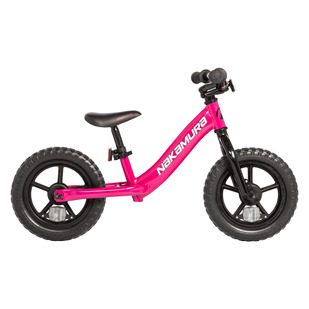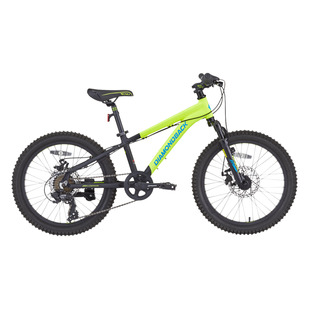From 3 to 5 years old: Bike with training wheels
Once the balance bike is controlled, you can go for a bike with pedals. And what about those famous little wheels on the sides? If your child started their learning journey with a balance bike, it is more likely that he or she won't need them. However, for a child who is just starting out or who is more cautious, training wheels will help to learn how to ride a pedal bike.

Purchasing advice
To choose the right size, have your child try out different models of bike and verify the following three points:
- Both feet touch the ground when the child is properly seated on the saddle.
- The child can sit on the saddle on his or her own.
- The child can effortlessly reach the handlebar and control the brakes (if any).
If your child's knees touch the handlebar while pedalling, it means the bike is too small for him or her.
Many parents mistakenly believe that buying a slightly larger bike will allow their child to keep it for a longer time. Unfortunately, this can promote incorrect position and even create a driving hazard (legs too short to reach the ground, arms too short to properly hold the handlebars and use the brakes, etc.). Riding a bike that is too small and no longer suitable for the child's height can also cause discomfort such as knee pain. Therefore, remember to choose a bike that is perfectly adapted to your child's size.



















